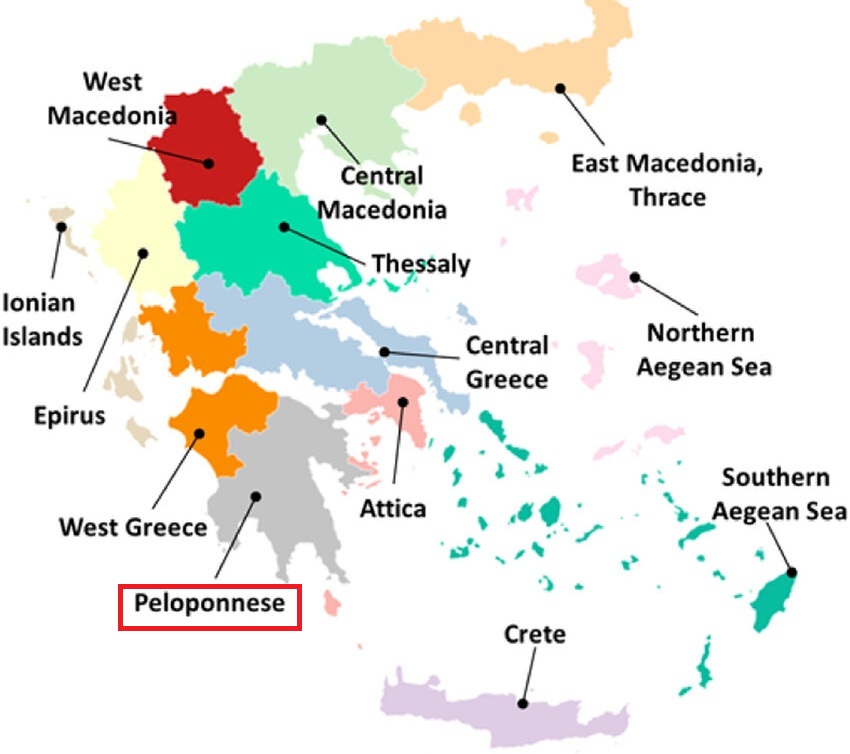Greek Grapes
Agiorgitiko (Mavro Nemeas)

Agiorgitiko (also called Nemea) is the most planted red wine grape in Greece.
Agiorgitiko (St George's Grape) is probably named after a chapel near Nemea.
The best Agiorgitiko wines are the full-bodied reds from Nemea.
Agiorgitiko Flavors
Cherry |
Raspberry |
Pomegranate |
Blackberry |
Plum |
Blackcurrant |
Herbs |
Pepper |
Fruity red berries (Cherry, Raspberry, Pomegranate) Plum, and sometimes Blackcurrant are typical Agiorgitiko flavors.
Agiorgitiko - The Pride of Greek Red Grapes
Agiorgitiko (ah-yor-YEE-tee-ko) is the most celebrated and versatile Greek red wine grape. Native to the region around Nemea in the northeastern Peloponnese, it is sometimes called the "Blood of Hercules" in local lore.
This ancient grape is revered for its ability to produce a wide range of wine styles — from light and fresh to rich and age-worthy.
Agiorgitiko is often called "the chameleon grape" because of its versatility. It is one of the few Greek grapes that has both high commercial success and strong historical significance. DNA studies suggest it has a very ancient origin, linking it back to pre-classical Greek viticulture.
Key Characteristics
Typically soft, rounded tannins combined with a juicy acidity.
Flavors of ripe red fruits, sweet spices, and often a subtle peppery edge.
The mouthfeel can be lush and silky, depending on how it is vinified.
Wine Styles
Color
Deep, vibrant ruby to dark purple.Structure
Medium to full-bodied, with a smooth finish that can range from fresh to complex.Young and fresh Agiorgitiko
Light-bodied, vibrant, often unoaked, and very fruit-forward — great for casual drinking.Oak-Aged Agiorgitiko
Barrel aging brings out vanilla, tobacco, mocha, and deepens the texture.Rosé Agiorgitiko
A bright, aromatic rosé style with strawberries and watermelon notes.Blends
Sometimes blended with international varieties like Cabernet Sauvignon for added structure.
Terroir
Agiorgitiko thrives best at higher altitudes where cooler temperatures allow it to retain its natural acidity. The limestone soils of Nemea add a mineral backbone to the wines, enhancing their complexity.
Wine Region Peloponnese

Black Grapes |
White Grapes |

|

|
Soil |
Climate |

Fertile Sandy-Loam. |

Mediterranean |
Peloponnese PDO Regions
Peloponnese (South Greece) has 3 PDO regions:
- PDO Nemea (1971)
- PDO Mantinia (1971)
- PDO Patra (1972)
PDO Nemea (ΠΟΠ Νεμέα)
Nemea is producing some of Greece's finest red wines.
Often called the "Bordeaux of Greece", Nemea produces rich, fruit-forward reds from Agiorgitiko, one of Greece’s most popular grape varieties, known for its deep red color, robust tannins, and rich flavors of red fruits and spices.
PDO requirements:
Dry Reds from 100% Agiorgitiko.
Semi-Sweet Reds from 100% Agiorgitiko.
Fortified Reds from 100% Agiorgitiko.
Sweet Reds from 100% Agiorgitiko (sun dried).
PDO Mantinia (ΠΟΠ Μαντινεία)
Located in the cool, mountainous Peloponnese, Mantinia is known for Moschofilero, a pink-skinned grape producing aromatic, floral white wines. These wines are typically light, refreshing, and aromatic, with hints of rose petal and citrus, making them versatile with a variety of dishes.
PDO requirements:
Dry whites from min 85% Moschofilero + Asproudes.
Sparkling wines from min 85% Moschofilero + Asproudes.
PDO Patra (ΠΟΠ Πάτρα)
PDO requirements:
Dry Whites from 100% Roditis.
Medium-Dry Whites from 100% Roditis.
Medium-Sweet Whites from 100% Roditis.